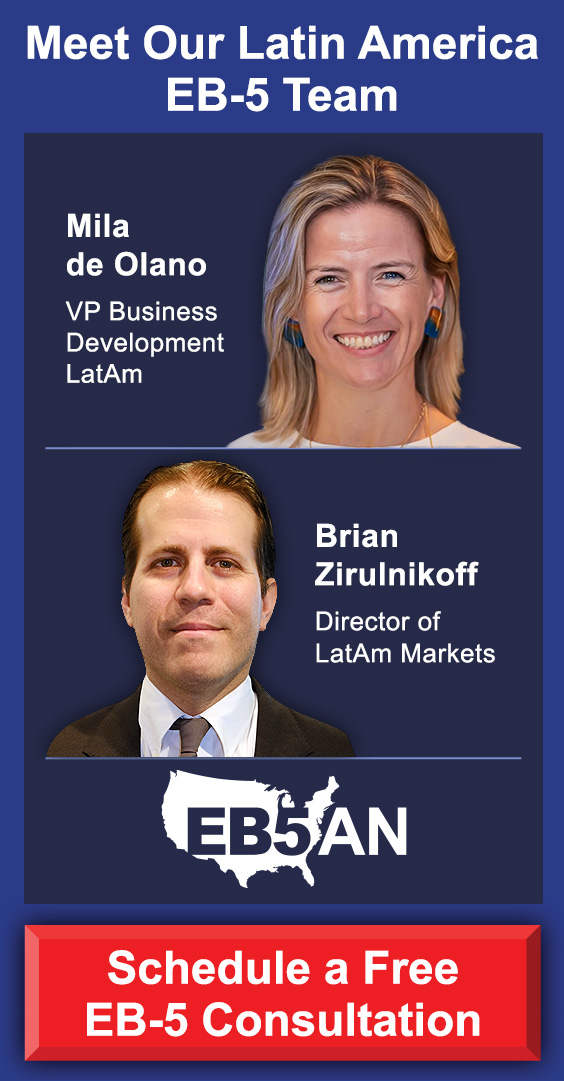For many families around the world, the EB-5 Immigrant Investor Program is one of the most attractive pathways to U.S. permanent residency. But while thousands of investors file their I-526E petitions with similar goals in mind, their outcomes, particularly the speed of adjudication, can vary drastically.
Some investors receive approvals in a few months. Others wait multiple years with little to no progress. Why? What factors explain the wide differences in processing times?
Recent data released by United States Citizenship and Immigration Services (USCIS), alongside internal reports from EB-5 industry leaders like EB5AN, provide the clearest answers yet. This article explores the major factors that influence EB-5 petition processing times and why project category, especially rural vs. urban, is currently the single most important variable in determining how quickly an investor might receive a U.S. Green Card.
A Stark Divide Between Rural and Urban Petitions
Why Is USCIS Prioritizing Rural Projects?
Other Key Factors in EB-5 Petition Speed
- Country of Origin
- Strength and Credibility of the Project
- Quality of Legal Representation
- Clarity and Completeness of Source of Funds
Should Urban Investors Be Concerned?
Strategic Advice for Prospective Investors
Choose the Fast Lane, Invest in Rural EB5AN Projects
A Stark Divide Between Rural and Urban Petitions
Since the passage of the EB-5 Reform and Integrity Act of 2022 (RIA), USCIS has been required to prioritize EB-5 investments in rural areas.
Until recently, it was unclear how USCIS was implementing that mandate in practice. But new adjudication data spanning from April 2022 to January 2025 has now made it clear: Rural EB-5 petitions are being processed far faster and in far greater volume than urban ones.
- From April 2022 to January 2025, 27% of rural I-526E petitions were adjudicated.
- In contrast, only 7% of urban petitions were processed during the same period.
- Since February 2023, the discrepancy has widened even more, with USCIS processing about 13 times more rural petitions than urban.
In practical terms, this means investors in rural EB-5 projects are typically seeing approvals within 8 to 10 months, while those in urban projects are largely stuck in queue.
Why Is USCIS Prioritizing Rural Projects?
Under the RIA, Congress created set-aside visa categories and required USCIS to give priority processing to rural EB-5 investments. The goal was to encourage more investment in underserved areas, and the policy is clearly working. As of January 2025, 58% of new I-526E petitions were for rural projects, compared to just 40% for urban.
In addition to faster timelines, the rural visa category comes with twice as many annual visas set aside compared to the urban (high-unemployment area) category. This reduces the chance of hitting visa backlogs and adds to the strategic advantage of choosing rural.
Other Key Factors in EB-5 Petition Speed
While rural vs. urban is the biggest driver of current delays, other factors also play an important role in how quickly (or slowly) an I-526E petition is processed.
Country of Origin
Each country has an EB-5 visa quota. When demand exceeds supply for a specific nationality, a visa backlog can occur. China and India have historically faced backlogs, but rural category filings are currently helping to mitigate this risk due to dedicated visa set-asides.
Strength and Credibility of the Project
Projects backed by reputable regional centers with strong track records tend to move more smoothly through USCIS review. High-quality documentation, clear job creation models, and sound financial structures reduce the likelihood of Requests for Evidence (RFEs) or denials.
Quality of Legal Representation
The EB-5 process is complex. A seasoned immigration attorney can make a critical difference in the petition’s success and speed. Poorly prepared petitions, especially those with incomplete source-of-funds documentation, often get delayed or denied.
Clarity and Completeness of Source of Funds
USCIS requires a complete, lawful, and traceable explanation of how an investor acquired their EB-5 capital. Any gaps, inconsistencies, or unclear transfers can result in RFEs or denials. A thorough and well-documented source-of-funds report is crucial.
Should Urban Investors Be Concerned?
The data suggests that urban I-526E petitions have virtually ground to a halt. Since early 2023, only 1.5% of urban petitions have been processed.
For current urban investors, this raises some concerns. One possible remedy is filing a writ of mandamus, a legal action compelling USCIS to act on a delayed petition. However, this approach carries costs and risks and should be pursued only after careful consultation with immigration counsel.
More broadly, investors in urban projects face growing risk of visa backlogs, especially as pending petitions accumulate and adjudication rates remain low.
Strategic Advice for Prospective Investors
If you are considering an EB-5 investment, here are some key takeaways from the latest data:
- Rural projects offer a clear processing advantage. With priority processing, faster approvals, and fewer backlog risks, rural EB-5 projects are currently the most efficient path to a U.S. Green Card.
- Urban projects may result in significant delays. Despite being “current” on the Visa Bulletin at the time of writing, the adjudication freeze creates major uncertainty for urban investors in the future.
- Choose your project and attorney carefully. Reputable regional centers and experienced EB-5 attorneys dramatically reduce the risk of delays or denials.
- Act quickly while categories are still current. Rural filings are also increasing, and if volume continues rising, even rural visas may face backlogs in the future. The current window offers optimal timing.
Choose the Fast Lane, Invest in Rural EB5AN Projects
In today’s EB-5 landscape, not all petitions are treated equally. USCIS is clearly enforcing the RIA’s priority processing requirement for rural I-526E petitions and the numbers don’t lie. Investors in rural projects are seeing consistent, fast approvals, while investors from high-demand countries who participated in urban projects are stuck waiting.
If your goal is to secure a U.S. Green Card as efficiently as possible, rural EB-5 investments offer the best chance for timely approval with minimal risk of delay.
As always, consult with a trusted EB-5 immigration attorney and select a strong, compliant project with a proven track record.
As the regional center sponsor behind 20% of all rural EB-5 project approvals in 2023 and 2024, EB5AN has guided more than 2,700 families from over 70 countries on their journey to becoming U.S. permanent residents. Our team has more than a decade of experience and offers clients first-rate, low-risk EB-5 regional center projects with a 100% USCIS project approval rate.
If you would like to know more about your EB-5 investment options, book a free call with our expert team today.










